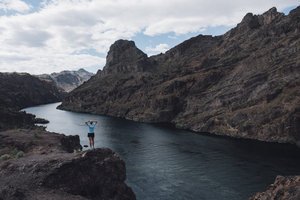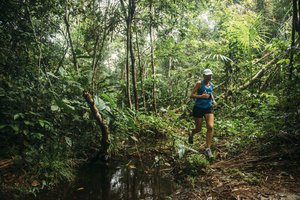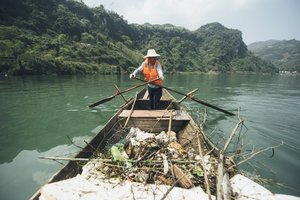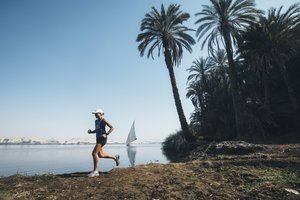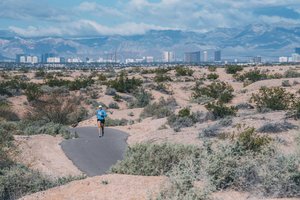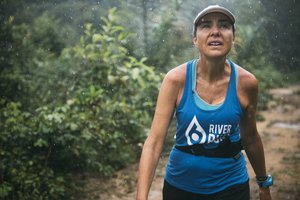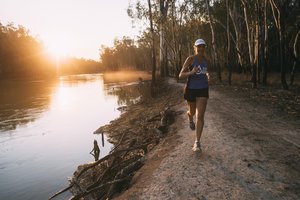WHAT I LEARNED FROM RUNNING 40 MARATHONS IN 40 DAYS FOR WATER
It is the beginning of May 2017, and less than 10 days ago I finished an admittedly crazy, and perhaps seemingly impossible quest. On March 22, 2017 in Las Vegas, Nevada, I started to run a marathon a day for 40 days along six of the world's most iconic and precious rivers to draw attention to the global water crisis. Now that it’s all over, I’ve run a total of 1,688 kilometers.
The #Run4Water expedition has been harder than I could have imagined. The one question that people keep asking me is: how did I keep going?
I kept going because I believe that by finishing this challenge, I would draw more people’s attention to the global water crisis. It wasn’t easy, and that is the point. We need people to go beyond what is comfortable and to commit to saving water. If we don’t, by 2030 the global demand for water will outstrip supply by 40%.
A global movement
My journey over the past 6 weeks has taken me to the United States, Brazil, Australia, China, Egypt, and England. Each of these countries, there are major cities built around rivers, and each has different water issues and different lessons to teach. Here is what I learned.
The Colorado River, USA: turning scarcity into abundance with innovation
The Colorado River is America’s hardest working river, providing water to 40 million people. But, so much water is extracted from this river that it no longer even makes it to the ocean.
As I landed in Nevada, a two-year water restriction was still in force because of a long drought that should make Las Vegas vulnerable to water scarcity. The city’s smart, innovative approach to water, however, has reinvented the region’s relationship with water. By becoming more water-conscious, Las Vegas has reduced its water intake by 37 percent in just under a decade and a half (this while increasing its population by some 500,000).
My take-out from Las Vegas: government and business can make a difference by investing in water-saving innovation and infrastructure.
The Amazon: no time to graze
As I headed off to run alongside part of the Amazon River, a downpour turned most of the trails into thick mud. An old hip injury I picked up during training returned because of the uneven surface. Running in the sweltering jungle, with its choking humidity and thick, heavy air, sapped my energy. Things got real pretty quickly, and when I couldn’t run I slowed down to a fast walk.
I learned about the country’s ‘flying river’. The aerial ‘river’ moves above the canopy of trees, and are just as important as Amazon River itself. Trees in the Amazon’s vast rainforest work like bionic pumps, sucking water from the ground and releasing this into the atmosphere as vapour. These billions of tons of water vapor in turn from clouds, or a ‘flying river’ which causes almost all the rain in the Amazon. Strong winds sweep some of these clouds to the Southerly part of the Brazil, and even Argentina, supplying the rain that these agricultural regions so desperately rely on.
Disturbingly, the Amazon is under threat because some 20 percent of the rainforest has been decimated. The biggest threat to the Amazon is cattle ranching. We need to find alternatives for beef products.
Melbourne: do what is necessary even if it hurts
Australia is the driest inhabited continent on earth, with the least amount of water in rivers. I came back to the place I grew up because I know Aussies are survivors and have a lot to teach the world about water management.
The run got extremely difficult along the Murray River in Australia. My calves and ankles were in burning pain. But what I have learned is that the memory of pain fades. If I could just keep going, it would be worth it. And I actually think this is a fitting metaphor for what Australia has done. They made changes in water management that were hard but ultimately worth it. The most worthwhile things are never easy.
Shanghai: There’s hope!
In Shanghai, China, I had to use a mask to protect me from the pollution — it felt like breathing through a straw. I was running along the Yangtze River when I felt a familiar burn in my throat and chest. Having lived in China for 10 years, I knew that this was from the critically high air pollution levels in the city.
Running along the Yangtze, I meet a man who calls himself the River Guardian. Li Wei tells me that he comes to the Yangtze every single day to scoop scraps of garbage out of the river with a sieve-like contraption attached to a long wooden pole. He does this without fail because, as he says, "I dream of a river that my children can swim in and drink from, just as I did as a child.”
The Yangtze river has become horribly polluted, but thanks to the commitment of people like Li Wei and good policy by the central government, the river and air is getting cleaner. China is becoming a world leader in environmental policy.
Cairo: a nation built on water
In Egypt, the city of Cairo embraced me, and everywhere I went I was welcomed warmly. The legendary Nile River has sustained life for millennia. The Nile is an international river that supports more than 450 million people across nine countries, and that number is set to double in the next 25 years. The Nile river is under severe strain, and will not be able to sustain that volume of demand unless all 9 countries get better at water management.
The lesson of the Nile is the lesson of cooperation. We need to work together to solve this water crisis. If those 9 countries have a water crisis it won’t just be a regional collapse, it will cause conflict and economic strain that will be felt by the world.
London: There is life after death
London is a city I’ve been in love with for as long as I can remember. Running along the River Thames felt like coming home, although finding the source of the waterway was humbling. It was a green field with a stone monument. I learned from locals that the source of the River Thames has been dry for some time now. They told me that during a wet winter a spring does appear, and the source of the Thames trickles with a bit of water.
Close on seventy years ago, the tidal Thames was declared ‘biologically dead’. Once a thriving ecosystem, in 1950 the Thames was doomed. In the last decade and a half the river was brought back from the dead and is currently the cleanest river the run through any major city.
My message to you
I want to give an enormous, heartfelt thanks of gratitude to all of you for your support and encouragement over the past 6 weeks. I could not have done this without you.
But, the hard work doesn't stop now that the running has ended. Clean, safe, accessible water for all is the most pressing issue our world faces today. Water scarcity, poor water quality and inadequate sanitation affect people’s livelihoods, food security, choices and futures. It affects the job market, our economies, as well as our common safety and stability.
I hope that you can all help to spread the word and educate others on invisible water usage and inspire the world to create change for our future and our children's future. I’m hoping that after reading about this epic quest, you’ll join me and become a water hero.
Becoming a Water Hero
If you’re ready to step up and be a water hero, here are some resources for you to get going on your own epic journey.
Firstly, ensure that you and everyone in your household are educated about the water crisis, and know your water footprint.
Encourage the businesses you work with to measure and disclose their water footprint. And, if you own or run a business, commit to the CEO Water Mandate.
Finally, if you have influence in government please take the water crisis seriously by integrating SDG6 into your policy framework.
Look back on the #Run4Water quest on:
Twitter: @minaguli
Instagram: @minaguli
Facebook:facebook.com/MinaGuliWater/
Pledge to save water here.
This piece is licensed #freeforuse with #attribution through #CreativeCommons


